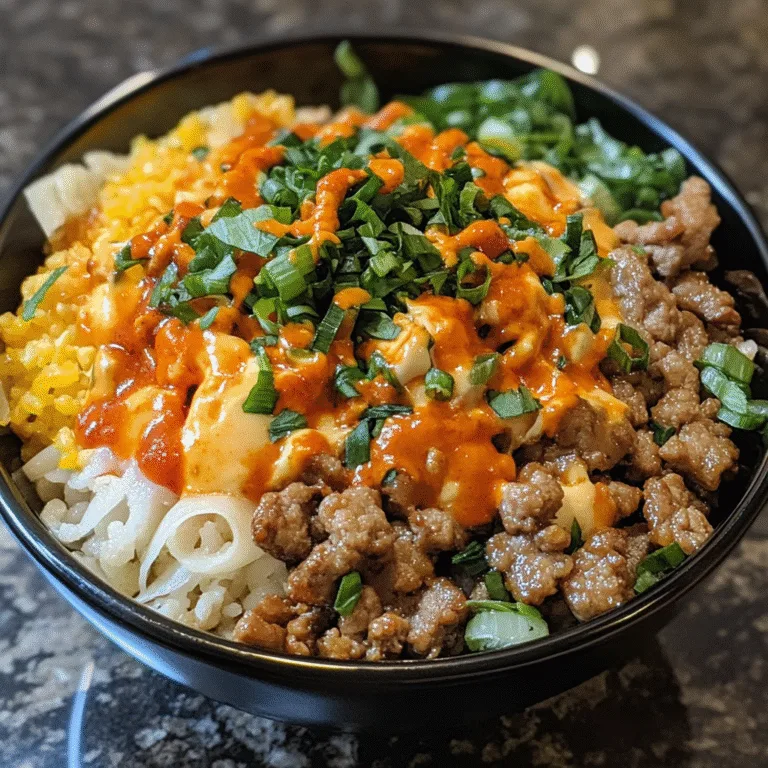Follow Me On Social Media!
Homemade Breakfast Sausage
Introduction
Did you know that store-bought breakfast sausage contains an average of 400-600mg of sodium per serving—that's nearly 25% of your daily recommended intake before you've even finished your morning coffee? What if I told you that creating homemade breakfast sausage could slash that sodium content by up to 70% while delivering exponentially better flavor and nutrition? Today's commercial breakfast sausages are loaded with preservatives, fillers, and mysterious additives that your great-grandmother wouldn't recognize as food.
Making homemade breakfast sausage isn't just a healthier alternative—it's a culinary game-changer that puts you in complete control of every ingredient. Whether you're following a specific diet, managing food allergies, or simply craving that perfect blend of spices that commercial brands can't deliver, crafting your own breakfast sausage opens up a world of customization possibilities. This recipe will transform your morning routine and prove that the best breakfast sausage comes from your own kitchen, not the grocery store freezer aisle.

Ingredients List
Creating the perfect homemade breakfast sausage requires a careful balance of high-quality meat, aromatic spices, and fresh seasonings. Here's everything you'll need for this foolproof recipe:
Main Ingredients:
- 2 pounds ground pork shoulder (80/20 fat ratio for optimal juiciness)
- 1 teaspoon kosher salt (or ¾ teaspoon table salt)
- 1 teaspoon freshly ground black pepper
- 1 teaspoon dried sage (or 1 tablespoon fresh sage, finely chopped)
- ½ teaspoon dried thyme
- ½ teaspoon garlic powder
- ¼ teaspoon red pepper flakes (adjust to taste)
- ¼ teaspoon ground nutmeg
- 2 tablespoons cold water or apple cider vinegar
Substitution Options:
- Meat alternatives: Ground turkey, chicken thighs, or a 50/50 pork-beef blend
- Sage substitute: Fresh rosemary or marjoram
- Lower sodium: Reduce salt to ½ teaspoon and add lemon zest for brightness
- Heat lovers: Increase red pepper flakes or add cayenne pepper
- Sweet variation: Add 1 teaspoon brown sugar and ¼ teaspoon cinnamon
The beauty of homemade sausage lies in its adaptability—these ingredients create a classic American breakfast sausage profile, but feel free to experiment with fennel seeds for an Italian twist or smoked paprika for a deeper flavor dimension.
Timing
Preparation Time: 15 minutes
Cooking Time: 8-10 minutes per batch
Total Time: 25-30 minutes
Resting Time: 30 minutes (recommended for flavor development)
Compared to the average store-bought breakfast sausage cooking time of 6-8 minutes, homemade breakfast sausage cooks slightly longer due to its fresh, unprocessed nature. However, the hands-on preparation time is minimal, making this recipe perfect for weekend meal prep or busy weekday mornings when you want something special without the fuss.
Step-by-Step Instructions
Step 1: Prepare Your Workspace and Ingredients
Start by chilling a large mixing bowl in the refrigerator for 10 minutes—cold equipment helps maintain the proper texture of your sausage mixture. Remove the ground pork from refrigeration about 5 minutes before mixing to make it easier to work with while keeping it properly chilled. Measure all your spices into a small bowl and whisk them together to ensure even distribution throughout the meat.
Step 2: Combine the Spice Mixture
In your chilled mixing bowl, combine the kosher salt, black pepper, sage, thyme, garlic powder, red pepper flakes, and nutmeg. The key to exceptional homemade breakfast sausage is ensuring these seasonings are evenly distributed before adding the meat. This prevents pockets of over-seasoned or bland areas in your final product.
Step 3: Mix the Sausage Blend
Add the ground pork to your spice mixture along with the cold water. Using clean hands or a wooden spoon, gently combine the ingredients until just mixed—overmixing develops the proteins too much and creates a tough, dense texture. The mixture should look evenly speckled with spices and feel slightly sticky to the touch.
Step 4: Test and Adjust Seasoning
Before cooking the entire batch, form a small patty (about 1 tablespoon) and cook it in a hot skillet for 2-3 minutes per side. Taste this test patty and adjust the seasoning in your remaining mixture if needed. This step is crucial for achieving the perfect flavor balance in your homemade breakfast sausage.
Step 5: Shape and Cook the Sausages
Form the mixture into 8-10 patties, each about ½-inch thick, or shape into small breakfast links if preferred. Heat a large skillet over medium heat and cook the sausages for 4-5 minutes per side until golden brown and the internal temperature reaches 160°F (71°C). Avoid pressing down on the patties while cooking to maintain their juicy texture.
Nutritional Information
Per serving (approximately 3 oz or one large patty):
- Calories: 285
- Protein: 18g
- Carbohydrates: 1g
- Total Fat: 23g (Saturated: 8g)
- Fiber: 0g
- Sugar: 0g
- Sodium: 310mg
This homemade breakfast sausage provides excellent protein content to fuel your morning while containing significantly less sodium than commercial alternatives. The high protein content supports muscle maintenance and helps keep you satiated longer, making it an excellent choice for active individuals or those following higher-protein dietary plans.
Healthier Alternatives for the Recipe
Transform this classic homemade breakfast sausage recipe to meet various dietary needs without sacrificing flavor:
Lower-Fat Version: Substitute ground turkey breast or lean ground chicken for half the pork, reducing the fat content by approximately 40% while maintaining the savory sausage flavor.
Plant-Based Alternative: Use crumbled extra-firm tofu or textured vegetable protein mixed with additional herbs, nutritional yeast, and a touch of liquid smoke to create a satisfying vegetarian breakfast sausage.
Keto-Friendly Option: This recipe is naturally low-carb, but you can enhance it with additional herbs and spices without adding carbohydrates, making it perfect for ketogenic meal plans.
Reduced Sodium: Cut the salt in half and add fresh herbs like parsley, chives, or oregano to boost flavor without increasing sodium content.
Serving Suggestions
Homemade breakfast sausage pairs beautifully with classic morning favorites and creative breakfast combinations. Serve alongside fluffy scrambled eggs and buttered toast for a traditional American breakfast, or incorporate into breakfast hash with roasted potatoes and bell peppers.
For something more sophisticated, crumble the cooked sausage over a breakfast pizza with eggs and cheese, or stuff it into warm biscuits with honey butter. The sausage also works wonderfully in breakfast casseroles, quiches, or as a protein addition to breakfast grain bowls with quinoa and roasted vegetables.
Consider pairing with fresh fruit like sliced apples or berries to balance the rich, savory flavors, and serve with freshly squeezed orange juice or robust coffee to complete your morning meal.
Common Mistakes to Avoid
Overmixing the Meat: The biggest mistake when making homemade breakfast sausage is overworking the mixture, which develops the proteins excessively and creates a tough, dense texture. Mix just until the ingredients are combined.
Cooking at Too High Heat: High heat will burn the outside while leaving the inside undercooked. Medium heat allows the sausage to cook evenly and develop a beautiful golden crust.
Skipping the Test Patty: Always cook a small portion first to check seasoning levels. It's much easier to adjust spices before cooking the entire batch than to fix an under-seasoned final product.
Using Lean Meat: Don't substitute with very lean ground meat without adding fat back in. The fat content is crucial for juicy, flavorful breakfast sausage.
Storing Tips
Refrigeration: Store uncooked homemade breakfast sausage mixture in the refrigerator for up to 3 days in an airtight container. For cooked sausages, they'll keep for 4-5 days when properly stored.
Freezing: Raw sausage mixture freezes beautifully for up to 3 months. Form into patties, place on a parchment-lined baking sheet, freeze until solid, then transfer to freezer bags. Cooked sausages can be frozen for up to 2 months.
Reheating: Thaw frozen sausages overnight in the refrigerator. Reheat cooked sausages in a skillet over medium-low heat or in the microwave at 50% power to prevent overcooking and maintain moisture.
Conclusion
Creating homemade breakfast sausage transforms your morning routine from ordinary to extraordinary while giving you complete control over ingredients and nutrition. This recipe proves that making restaurant-quality breakfast sausage at home is not only achievable but surprisingly simple and rewarding.
The difference in flavor, texture, and overall quality compared to store-bought alternatives is remarkable, and you'll never want to go back to processed options once you experience the satisfaction of crafting your own. Plus, the ability to customize spices and accommodate dietary restrictions makes this recipe invaluable for any home cook.
Ready to revolutionize your breakfast game? Gather these simple ingredients and try making this homemade breakfast sausage this weekend. Don't forget to share your results and any creative variations you discover—your fellow breakfast enthusiasts would love to hear about your culinary adventures!
FAQs
Can I make this recipe ahead of time?
Absolutely! The sausage mixture actually improves in flavor when prepared a day ahead, allowing the spices to meld together. Store the uncooked mixture in the refrigerator for up to 3 days, or freeze formed patties for up to 3 months for ultimate convenience.
What's the best fat-to-lean ratio for homemade breakfast sausage?
An 80/20 ratio (80% lean, 20% fat) provides the ideal balance of flavor and moisture. Going leaner than 85/15 will result in dry, less flavorful sausages, while higher fat content can make them too greasy.
How do I know when the sausage is fully cooked?
Use a meat thermometer to ensure the internal temperature reaches 160°F (71°C). Visually, the sausages should be golden brown on the outside with no pink remaining in the center, and the juices should run clear.
Can I use this recipe to make sausage links instead of patties?
Yes! You can stuff this mixture into natural casings to create traditional sausage links, or simply shape it into log forms and slice before cooking. The cooking time may vary slightly depending on the thickness of your links.












